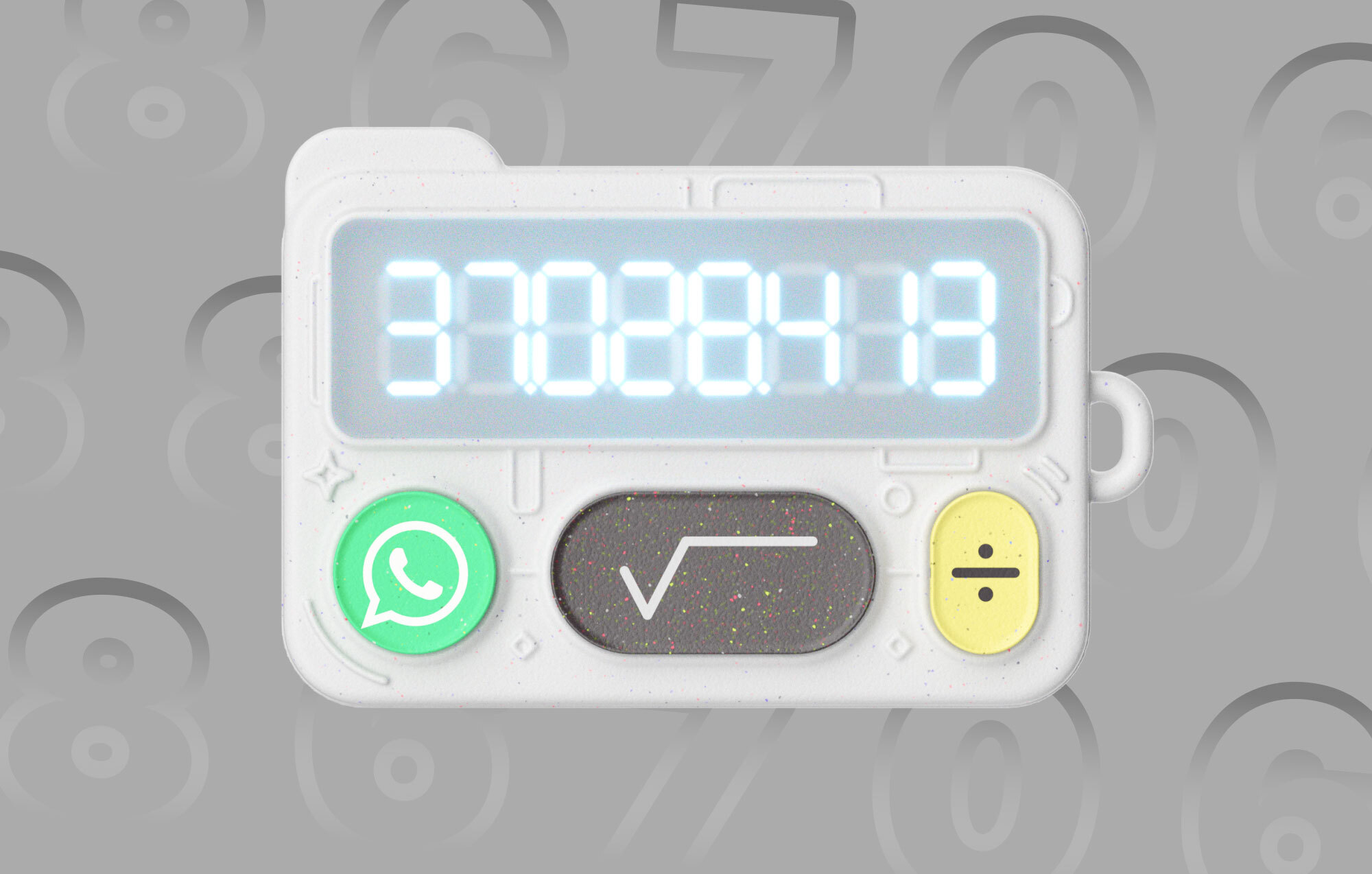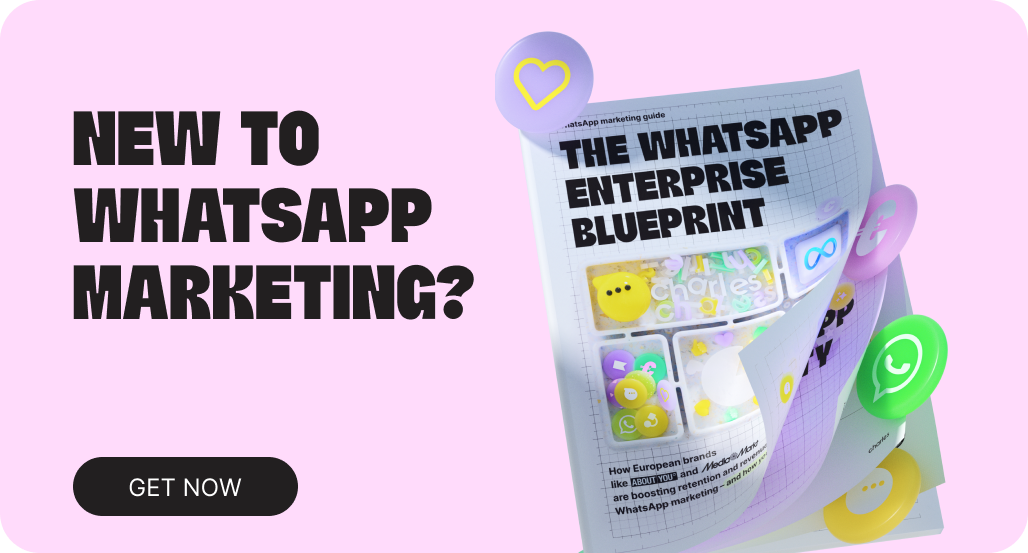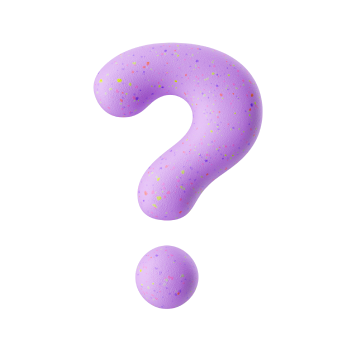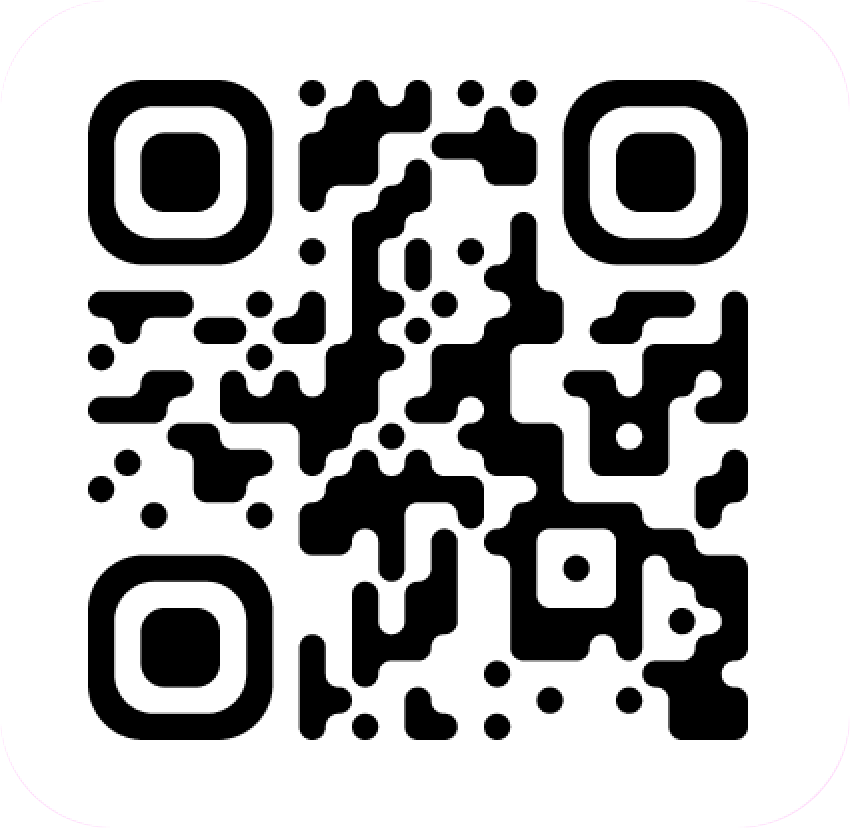Table of Contents
When you send WhatsApp campaigns to customers, how can you track their success? From RPR to ROAS, these are 4 WhatsApp marketing KPIs to know about.
Is your WhatsApp channel performing well? How can you tell? While marketing key performance indicators (KPIs) for email and social media are well known, WhatsApp marketing KPIs are a little less understood.
But as a marketer, you need to track the success of your WhatsApp campaigns.
In this article, we explain some concepts you need to know about WhatsApp metrics and analytics for marketing teams:
- WhatsApp KPIs explained
- Why you need WhatsApp chat metrics
- The benefits of WhatsApp KPIs
- 4 key KPIs of WhatsApp marketing campaigns
- 4 other WhatsApp marketing KPIs to watch
- Best practices for tracking WhatsApp KPIs
- To sum up: WhatsApp KPIs are key to your success
WhatsApp KPIs explained
WhatsApp KPIs are ways of measuring the success of WhatsApp Business and your activities within it. If you run a WhatsApp channel, you'll need metrics to track the success of service requests, sales efforts and marketing campaigns. In this article, we zoom into WhatsApp KPIs for marketing campaigns.
 The analytics dashboard in the charles WhatsApp platform
The analytics dashboard in the charles WhatsApp platform
Why you need WhatsApp marketing metrics
WhatsApp metrics and analytics are important because, as a business, you need to prove the value of a WhatsApp channel – as you would for any other channel. The monetary value to the company needs to be bigger than the outgoing costs.
This is especially important in the current economic climate when you need to optimize your marketing budget and martech stack for the most efficient spend.
But if you can prove that a channel adds value to your marketing mix and supports your business goals such as customer acquisition, driving revenue and retention, you can consider allocating budget to it and scaling it.
WhatsApp metrics matter more
In WhatsApp, KPIs and analytics matter even more than most other channels.
Why?
Because you pay per conversation, unlike email which is mostly free to send. A WhatsApp channel has even more pressure on it to earn more revenue than you spend.
...with brand benefits
Revenue and WhatsApp metrics can be less important for you if you decide to run your channel purely "customer service" or "brand" channel.
However, in this case, there should be some value to your overall business strategy such as improved customer experience or supporting customer retention.
For example:
- Feedback to improve products: our client, Venezianico, uses WhatsApp to gather customer feedback and suggestions to help them design the next product – which also helps it sell more when it's released (see Venezianico's story)
- Social proof to boost sales: our client, Oatsome, used WhatsApp to gather reviews before a product launch so it could have solid social proof for the public launch (see Oatsome's story)
why WhatsApp metrics matter
As WhatsApp still seems like a relatively new territory to most businesses (despite being part of the European commerce landscape for a few years now), the more concrete results you can produce for your business, the better.
In the end, what matters is being able to realize and prove the success of the channel as a long-term part of your overall marketing strategy.
With good, consistently measured WhatsApp analytics and calculations, you can:
- Prove you're continuing to earn more than what you spend
- Compare different campaigns and see which ones are successful
- Improve future campaigns based on results
- Show the value of WhatsApp to leadership
- Observe trends in WhatsApp behavior
The 4 key KPIs of WhatsApp marketing campaigns
These are some of our recommended KPIs that you can use to measure the success of your WhatsApp marketing campaigns. We've included these based on customer results, across different verticals, from our own platform so you can determine if your channel is performing well.
The results depend on a lot of factors such as AOV, vertical and region - and you can reach out to us if you would like some more specific advice for your business.
1. Revenue per Recipient (RPR)
charles median: €1.88*
RPR stands for “revenue per recipient” and is the average revenue earned by a business for each recipient who is part of a campaign or flow. It’s comparable to revenue per recipient (RPR) in email marketing.
It helps brands assess the financial return of their investment in charles and the WhatsApp channel overall. This is important as WhatsApp conversations incur additional fees compared to email – this is how Meta monetizes WhatsApp.**
RPR is calculated by taking the revenue generated by a WhatsApp campaign and dividing it by the number of recipients who received a WhatsApp message***. Typically, it is then analyzed for each single campaign or flow of a client.
🧮 How to calculate? Total revenue generated by WhatsApp/no. of WhatsApp recipients
⚖️ Unit: € per recipient
💬 Example: A campaign brings in €1,500, with 500 recipients = RPR of €3

RPR depends on your average order value (AOV) and conversion rate (CR) but the trend over time will give you a good idea of how people are responding to your campaign and how much revenue your WhatsApp channel generates.
This correlation between high AOVs and elevated RPRs underscores the platform's potential for high-margin industries. At the same time, even industries with lower AOVs like food and beauty have reported positive returns, demonstrating WhatsApp’s versatility across various sectors.****
*€1.88 median customer RPR per month from Dec 23 to May 24 from all charles customers with enabled revenue tracking
** Find out more about WhatsApp Business API pricing
***WhatsApp messages can be the marketing newsletter campaigns sent by a brand to their subscribers - however, this concept and logic can be equally applied to all marketing automation flows that are supposed to generate revenue, e.g. welcome flows for new subscribers, post purchase flows, or abandoned cart flows
****Based on data from charles' furniture, electronics, and household goods customers from Dec 23 to May 24 with enabled revenue tracking, where we saw a median RPR above €4.90 and an AOV of €154
2. Return on ad spend (ROaS)
charles average: ~16X*
Return on ad spend (ROAS) measures the revenue generated for every euro spent on advertising.
Typically you look at this as a key metric in eCommerce businesses and calculate ROAS by dividing the revenue attributed to ad campaigns by the total ad spend. This helps businesses assess the effectiveness of their advertising and marketing campaigns.
ROAS can differ a lot by the marketing channel and also across different industries. This report from FirstPageSage for example looked at ROAS data** from 52 of their customers across different industries and found eCommerce businesses to have an average ROAS between 2.05X - 3.65X, depending on the channel.
At charles, we calculate ROAS for WhatsApp as a channel by looking at the revenue generated per WhatsApp conversation and how much a conversation costs*** in Meta fees – not taking into account the charles platform fees. This metric helps gauge how effective a WhatsApp marketing campaign has been for a business.
🧮 How to calculate? Revenue per recipient (RPR)/marketing conversation Meta fee Germany
⚖️ Unit: x or "times" (like "12x ROAS")
💬 Example: A campaign achieves €1.88 RPR at a cost of €0.1131 per marketing conversation Meta fee = 16.6x ROAS

ROAS will also depend on your AOV and the initial objective of your campaign – for example revenue generation or brand building. We also have customers with significantly higher values and those in industries such as furniture, electronics and household goods can have a ROAS of up to 43X.****
*€1.88 median customer RPR per month from Dec 23 to May 24 from all charles customers with enabled revenue tracking. And taking into account the marketing conversation Meta fees for Germany = €0.1131
**Report on ROAS data from 52 clients between 2019 and 2024
***Taking WhatsApp's marketing conversation fees for Germany into account. Germany has some of the higher marketing conversation fees. You can find out more about the different WhatsApp conversations and Meta pricing here.
****Using the €4.90 median customer RPR per month from Dec 23 to Jun 24 from all charles customers in the category furniture, electronics & household supplies with enabled revenue tracking. And taking into account the marketing conversation Meta fees for Germany = €0.1131.
3. Click-through rate (CTR)
charles average: 13.4%*
This is equivalent to the click-through rate (CTR) you're familiar with from email marketing. It measures how many people tapped on a link in your WhatsApp message out of the number that opened it.
CTR is a good indicator of how well your campaign engages people. Our clients use this heavily for A/B testing – for example comparing CTR with an image compared to without. Or how do results compare if you add or don't add a header? Tip: adding a header sometimes performs better.
CTRs in WhatsApp tend to be higher than email (Mailchimp found the average email CTR to be 2.62%**). Jack Wolfskin for example, boosted the interactivity and personalization of their marketing campaigns with WhatsApp – resulting in Click-through rates of 23% - 30%.
🧮 How to calculate? (No. people who clicked on a link in the message/no. of people whom the message was delivered to)*100
⚖️ Unit: %
💬 Example: Campaign is delivered to 200 people, 120 people tapped on it = CTR of 60%
Quick note: why do we say number of people "campaign is delivered to" instead of number of people "you sent a campaign to"? This is because a small percentage of your messages won't successfully reach a phone – for example if the person changed their phone number.
*Calculated using charles data across all customers and universes – excluding small campaigns with <500 messages delivered and all campaigns with no link to click. Data is from the time period Dec 23 - Jun 24.
**Mailchimp's report on "Email Marketing Statistics and Benchmarks by Industry"
4. Open rate
charles average: 81%
Similar to email open rate, how many people opened your inital WhatsApp message out of the number that received it. These tend to be very high in WhatsApp, even just based on the nature of the channel. While we state an average here, some of our customers see open rates of 85% to 90% or higher.
🧮 How to calculate? (No. people who opened** your message/no. people message was delivered to)*100
⚖️ Unit: %
💬 Example: Campaign is delivered to 200 people, 180 opened it = open rate of 90%
*Calculated using charles data across all customers and universes – excluding small campaigns with <500 messages delivered. Data is from the time period Dec 23 - Jun 24.
**Since some people remove their read notification on WhatsApp, this data might not reflect the full picture
This is purely indicative information – legal disclaimer:
This analysis only provides an initial and purely indicative information based on historical platform data from our customers and using standard valuation methodologies. A reliable or definitive sales or revenue forecast cannot be derived from the result, either currently or in the future. Further, neither has charles independently verified the data and assumptions used in these analyses, nor made an undertaking to update the underlying data or assumptions meaning that such information may become outdated which will clearly impact the forecast result.
5 more WhatsApp metrics
Here are 5 more WhatsApp metrics you can also look at. For more ideas about how to set up your WhatsApp reporting, just ask us:
1. Conversion rate (%)
Many of our clients look closely at conversion rate in WhatsApp. From the number of people that tapped on your campaign, how many bought something? Or how many people who got your message bought something? This is shown in the charles analytics dashboard.
It's not always easy to tell because you can't track everyone's journey (because of Google Analytics relying on cookies and up to 30% of people not accepting cookies). But if you send a unique discount code in WhatsApp, that will help you track this.
You can also analyze conversion rate for opt-in flows – so you can then optimize these. Conversion rate during WhatsApp opt-ins tend to be very good since it's all done in short messages, in one simple conversation.
Also, those who commit to sign up to your WhatsApp channel tend to be very engaged already.
2. Average order value (AOV) (€/person)
This figure is usually calculated on a long-term basis, not necessarily per campaign. Of course it will depend on the cost of your products and depend on what you’re promoting with your campaign and how much discount you're offering.
We find that companies with a high AOV do particularly well in WhatsApp. This is because they can hugely shorten lead times (like furniture brand woodboom did, from 4 weeks to 4 days) and offer the personal, instant service that a person spending a large amount of money with a brand usually demands.
3. Total revenue (€)
Not all campaigns are about revenue, but if your goal was to make sales, this number will be important.
It's also a good, simple figure to get a quick idea of how much people are spending with you at each touchpoint, channel and in each campaign.
During peak commercial seasons such as Black Friday or running one big sales push, some of our customers even see 3-figure revenue generated from one campaign via WhatsApp (see examples here from leevje and Bears with Benefits)
.
4. Opt-in rate (%)
Some campaign goals are about how many people opted in to your WhatsApp channel through touchpoints across some of your marketing channels. For example through a popup on your website, a QR code in your stores or a "WhatsApp order updates" box on your thank you page after a purchase.
When you're starting out with WhatsApp, this is a useful number. You will need a large number of subscribers to make meaningful numbers in WhatsApp. Many of our customers optimize for this metric, especially when gearing up for a big sale or promotion that they can send to a large subscriber base. And this also means in the long-term, you are able to retain these customers via WhatsApp and generate more revenue across their lifetime.
Good to know: when opting people in, try and learn something about them (preferences, favorite color, size, location...) so you can send more targeted campaigns later on.
5. Unsubscribe rate/opt-out rate (%)
This number is the same as the email unsubscribe rate. It shows you how many people leave your WhatsApp channel after you send a WhatsApp campaign.
If it's low, it means you're on the right track – sending relevant, interesting content at the right frequency. If it's high, you should take a closer look at the content and frequency of your campaigns to check what you can improve.
🧮 How to calculate? [(number of people who said "STOP" to leave your WhatsApp channel communication shortly after you sent a campaign)/(number of people whom your message was delivered to)]*100
⚖️ Unit: %
💬 Example: 10,000 people received your campaign and 50 said STOP to your WhatsApp communication = unsubscribe/opt-out rate of 0.5%
WhatsApp KPIs vs email KPIs
WhatsApp KPIs are quite similar to email, and should not be too complicated to understand. CTR and open rate for example are common success metrics for both channels.
But in WhatsApp, the focus on revenue per recipient (RPR) is critical, as you also pay in most cases when you send a campaign. In email, this metric isn't as big of a focus because you often don’t pay per email you send, or the fee is relatively very small. (See WhatsApp API pricing here.)
How to measure the success of brand WhatsApp campaigns
Because of the costs attached to WhatsApp conversations, most of our clients are very focused on optimizing the revenue per recipient (RPR) through their campaigns.
But it's also a good strategy to send "brand" campaigns sometimes to strengthen your brand, build relationships with people and keep your brand top of mind. Sending sales-only messages risks your WhatsApp marketing being seen as spam. After all, WhatsApp is a fun channel where friends and family hang out, you need to tread carefully.
We recommend sending no more than 2-3 campaigns a month per person, with 1 of them being a brand campaign.
How do you measure the success of brand campaigns? It's harder of course, but you can look at metrics like CTR to measure engagement and numbers of opt-ins you get in WhatsApp.
How to track the success of WhatsApp campaigns
There are several ways to track the success of your WhatsApp campaigns:
- In your WhatsApp platform: any good WhatsApp marketing software should have good analytics built in. In charles, we show you all of the KPIs we've mentioned and more, and let you export them for easy reading and sharing.
- Shopify: when you integrate your shop system with charles (as most clients do), your analytics will show up in the charles platform too.
- Google Analytics: For Google Analytics you send a campaign linked to a UTM URL. Google Analytics is integrated into the charles platform and we automatically generate UTM links. It's important to note that the accuracy isn't perfect and the total revenue can be underestimated. We think of it more as a backup solution when no other tracking works
- Other tools: We recommend keeping things simple and not adding too much complexity with yet more tools.Tracify is another tool we recommend, which can produce more precise results than Google Analytics. You can create a special tracking link through Tracify. It's not WhatsApp specific however, and you pay for the software. These types of tools are mainly used by Enterprises, as they consider the tracking and attribution for all channels across their marketing mix.
Best practices for tracking WhatsApp KPIs
We advise our clients not just to look at Google Analytics numbers. They can differ a lot because of privacy settings (if people don't accept cookies, they won't be tracked).
We recommend you use at least 2 ways of tracking WhatsApp success. These are:
- Shopify (WhatsApp-only discount codes) and contact syncing: Generally syncing contacts between shop systems and your WhatsApp Solution Partner like charles is the recommended approach. However, you can also offer discount codes where you don't just say "10% off" and link to a web page offering 10% off. But give customers a discount code like SUMMER10 they can only find in WhatsApp. This way you can track their purchases through your Shopify store. The coupon code can be a bonus layer on top of the contact syncing approach. Coupon codes are generally recommended for universes with a low contact syncing rate.
- Google Analytics 4 (UTM links): these are automatically generated in the charles platform when you've integrated Google Analytics with your WhatsApp Solution Partner like charles. Shopify results will then show up on your charles dashboard beside your Google Analytics results – giving you a better indication of the actual results of your campaign.
You can also easily compare these with a unique email discount code to see which channel is performing better.
What about CLV and CACs in WhatsApp?
Customer lifetime value (CLV) is the amount of money people spend with a company over time. It is of course important, but is more of a long-term metric, and something that deserves an article of its own.
WhatsApp is a long-term channel (which is why we recommend sending regular brand campaigns as well as sales campaigns). Measuring CLV takes time and requires figures over a long period of time. At the moment, many brands are still testing the viability of a WhatsApp channel, so are more focused on short-term metrics to prove its value.
But this doesn't mean CLV isn't important. It is, and WhatsApp is particularly beneficial for CLV. We've found that when paired with email marketing efforts, WhatsApp tends to increase CLV.
For example, SNOCKS researched this and found that customers for whom they have an email address and a WhatsApp number have a higher CLV than those for whom they only have an email address.
Customer acquisition costs (CACs) are also a big concern for brands, especially now when money's tight and the future of their business may be uncertain.
However, WhatsApp at the moment is more of a retention channel. You need website visitors and email subscribers who will move into your WhatsApp channel.
To sum up: WhatsApp KPIs are vital to your success
WhatsApp KPIs are just as important as in any other channel, if not more. There's a perception that they're not yet established, but WhatsApp Business has been around for several years now and there are best practices that have been developed by experienced brands and WhatsApp Solution Partners like charles.
WhatsApp and email metrics are similar, but in WhatsApp there's more of a focus on RPR. There are a few key KPIs and many more you can use, depending on your business goals and needs.
You should invest in a good WhatsApp software platform that will give you easy-to-read, easy-to-find analytics you can export for easy sharing.
If you have more questions on WhatsApp KPIs or how to track success, just give us a shout. We love numbers and would be happy to talk them through with you.










